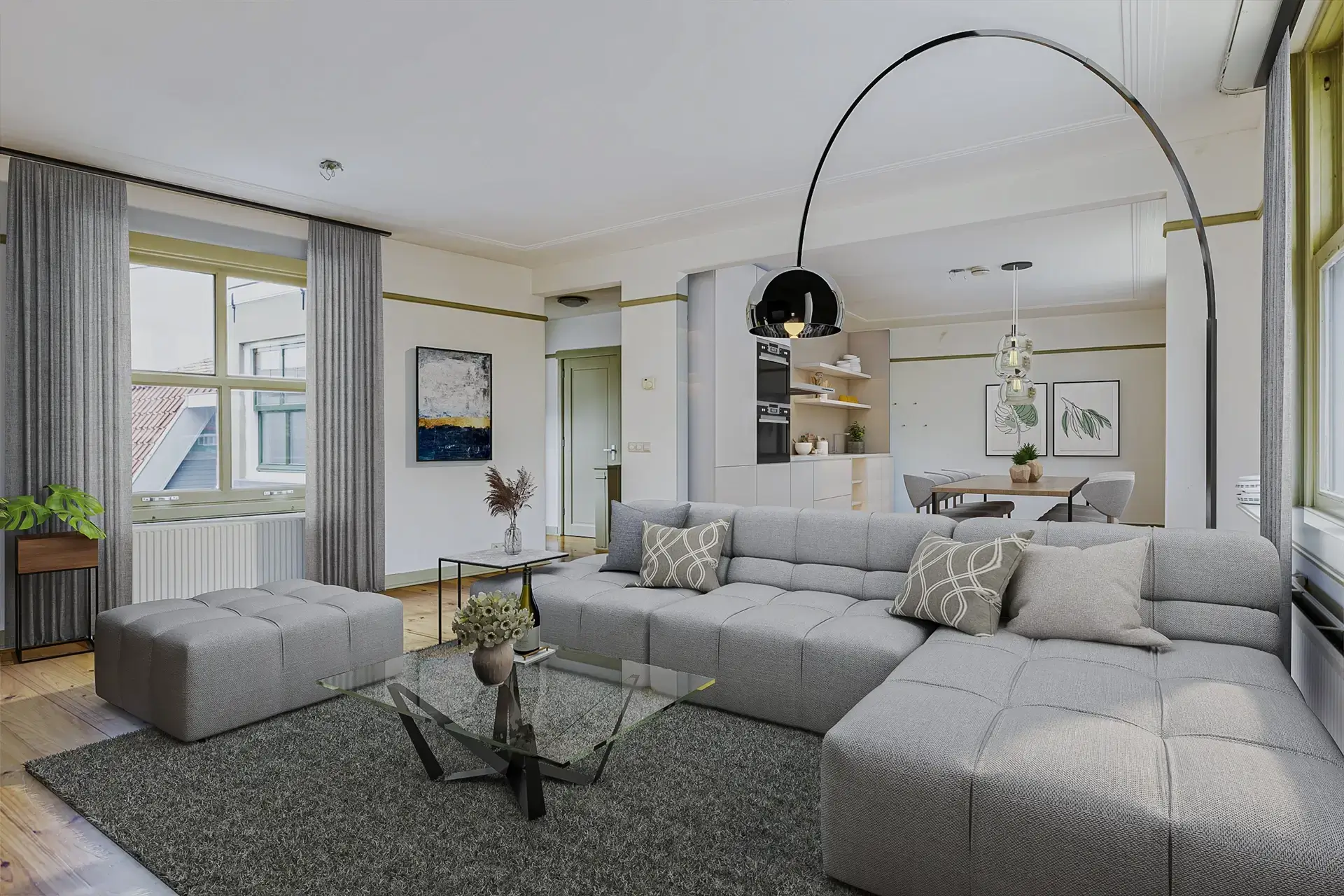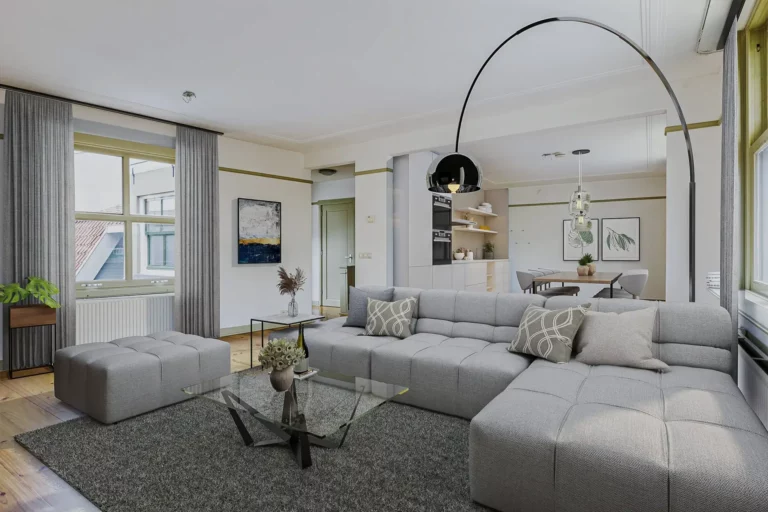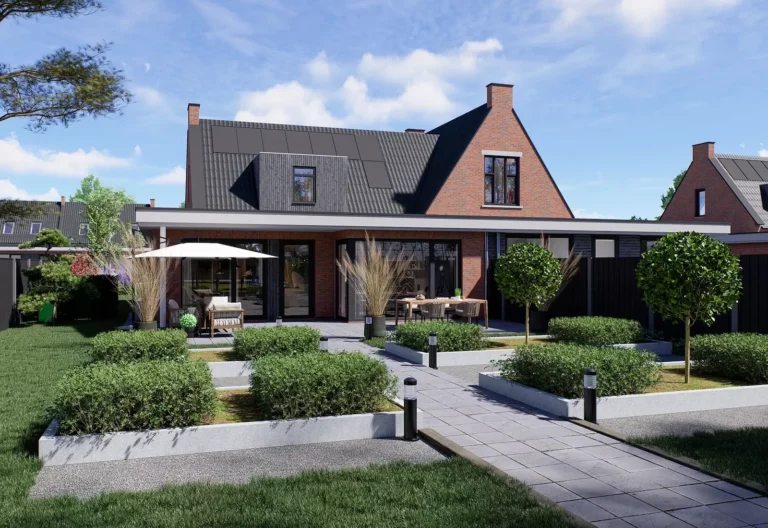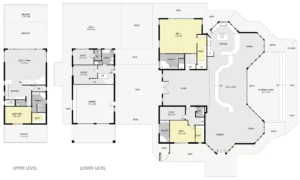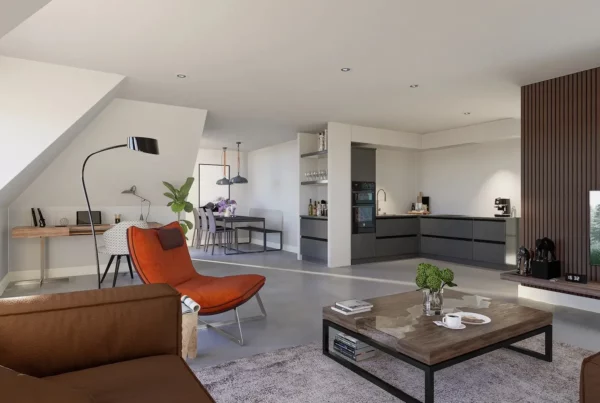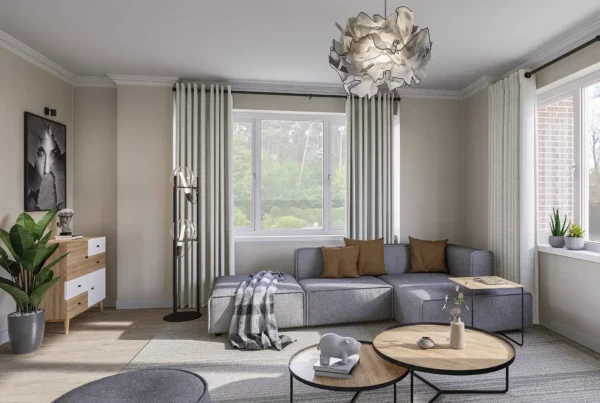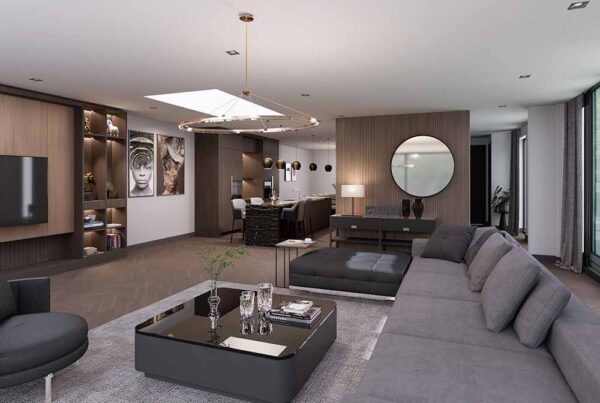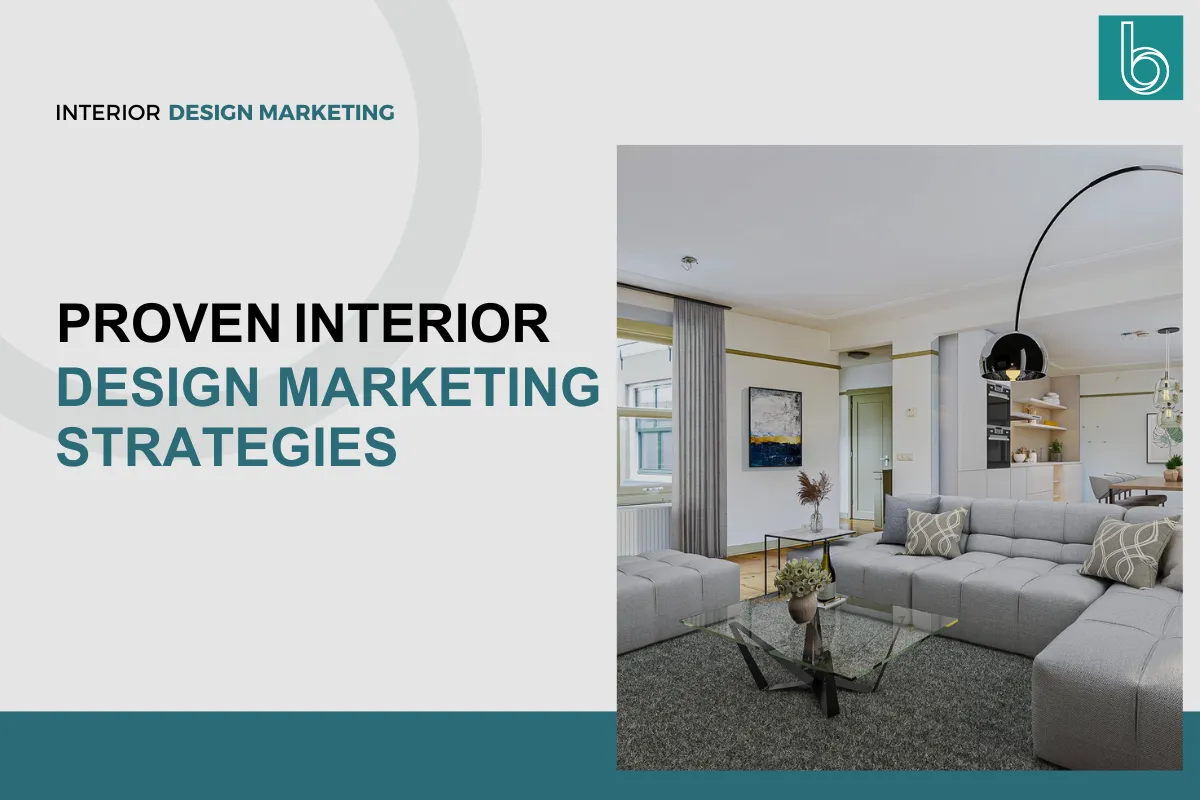
Introduction
Welcome to our comprehensive guide on proven interior marketing strategies for real estate professionals, designers, and architects. In this blog post, we delve into the essence of interior marketing, emphasizing its significance in the competitive landscape of the different industries.
From audience-centric approaches to leveraging digital platforms for brand visibility, we explore ten actionable strategies with real-life examples to elevate your marketing game. This blog will help you unlock the keys to success in interior marketing and empower you to thrive in today’s dynamic market.
Interior marketing is about showcasing home décor and design services to attract customers. Real estate pros, designers, research interior designers, and architects need to know their audience, be online, and use tactics like focusing on specific areas, researching, using social media, creating content, optimizing for search engines, sending emails, and networking.
- Understand what your potential clients want and like. Tailor your marketing to meet their needs and preferences. This connection builds trust and increases the chances of attracting clients.
- Establish a strong online presence with easy-to-use websites and active social media accounts. Consistently share valuable content to stand out and attract more clients.
- Focus on creating high-quality content and engaging with your audience. Encourage reviews and use data to make informed decisions. This approach leads to satisfied customers and long-term business growth.
Understanding interior marketing
Interior design marketing involves promoting home décor and design services to attract potential clients. It includes using different marketing strategies to raise awareness, gain trust, and build a good reputation. Marketing is vital for your business success as it helps you and your product stand out from competitors, draw in more clients, and boost revenue. By implementing the tips and strategies provided in this article, you can enhance your visibility, establish a strong reputation, and attract more clients, whether you’re an experienced interior designer or just starting.
The importance of interior marketing in the interior design industry
- Market Reach: Interior marketing enables you to reach a broader audience through online platforms, increasing visibility and attracting potential clients.
- Client Engagement: It facilitates interaction with clients on various digital channels, allowing designers to showcase their work, share design ideas, and receive feedback, enhancing client engagement and satisfaction.
- Brand Building: Digital marketing helps in building a strong online presence and brand reputation, establishing credibility in the industry, and distinguishing designers from competitors.
- Lead Generation: By utilizing digital marketing strategies such as SEO, social media marketing, and email campaigns, you can generate leads more effectively, leading to increased client inquiries and project opportunities.
- Business Growth: Effective digital marketing can be the difference between a struggling interior design business and a thriving one, driving business growth by attracting more clients, increasing sales, and expanding market reach.
10 Proven interior marketing strategies with real-life examples
Crafting a winning marketing strategy is crucial for business success in today’s competitive environment. To assist you in developing a strong and efficient plan, we’ve outlined 10 essential tips with clear explanations and real-life examples.
1. Find a specific niche in interior design to establish a customer base
Focusing on a niche for your business has proven to be beneficial. Having a specific customer base gives you an edge. By specializing, you can deliver top-quality work because you’re concentrating on what you excel at.
For instance, if you excel in modern interiors, market your brand as an expert in that. Similarly, if you’re great at designing studios and offices, establish yourself as the go-to for that niche. This targeted approach attracts the right audience and distinguishes your brand from competitors, garnering more attention and recognition.
2. Market research and competitive analysis
Running an interior design business requires focus, but don’t isolate yourself. Know your competitors and strive to offer superior services. Competition isn’t just for other designers; it includes various service providers like window treatment companies or stagers. In a competitive world, ignoring this puts your business at risk. Hence, market research and competitive analysis are crucial to move forward.
3. Set up a user-friendly website with blogs
Setting up a user-friendly interior design website with blogs is crucial to showcase your work and engage with your potential clients effectively. A visually stunning website reflects the high aesthetic standards of the business, leaving a positive first impression.
It must be optimized for various screen sizes and include features like portfolios, client testimonials, and easy contact options to build trust and credibility. Regularly updated blogs not only improve search engine visibility but also provide valuable insights and inspiration, establishing a deeper connection with the audience. Collaborating with professionals specializing in website design ensures both aesthetic appeal and technical functionality, driving business objectives effectively.
4. Social Media Marketing (SMM)
Navigating many online platforms to connect with potential clients can be daunting. However, utilizing testing and analytics can simplify your interior design marketing efforts. By identifying where your target audience spends their time, you can focus your resources effectively. Analytical tools provided by social media platforms and website companies offer insights into audience engagement and website traffic sources, guiding your digital marketing strategy.
5. Search Engine Optimization (SEO)
SEO is important for people to find your interior design businesses online. You need to target the relevant keywords related to your niche so that when people search for those terms, they find your website. You also need to write interesting articles about design trends or home renovation tips to show you know what you’re talking about. Local SEO is also equally important. This means making sure your business shows up when people search for interior designers in your area. If you’re not doing this, you might be missing out on local customers.
6. Content creation
In today’s digital age, having a solid content strategy is essential for businesses to stand out amidst the competition. With people consuming more content than ever, visual elements like images, videos, and animated graphics are key to grabbing attention and engaging audiences effectively. Your content should not only be visually appealing but also strategically aligned with your objectives, which helps you connect with potential customers and achieve your goals.
7. Request reviews and share your portfolio
Earning top-rated reviews on platforms like Google, Facebook, Trustpilot, and other respected directories can substantially elevate your business’s standing. Interior design portfolio and testimonial sets you apart from your acquaintances and competitors and establish you as one of the best in your area. Simply ask satisfied clients to leave reviews online. Provide them with links to review sites and even a template to make it easy for them. The more reviews you gather, the stronger your reputation becomes.
8. Visual brand storytelling
Visual brand storytelling refers to the process of using pictures, videos, and other visuals to show what your brand is all about. It’s like telling a story with images to connect with your customers emotionally. Whether you’re sharing project photos, showing how you work, or posting on social media, it helps people see your passion and expertise in interior design.
9. Email Marketing (EM)
Every effective interior design marketing plan should incorporate email marketing. After setting up a popup on your website to capture emails, it’s time to reach out to your prospects. Email marketing is a potent tool for converting casual visitors into leads and eventually clients. You can send helpful tips, how-to articles, updates on your latest projects, or promotional sales emails to engage your audience effectively.
10. Networking and partnerships
Networking and partnerships are important for interior marketing. They help you meet and work with other people in the industry, like designers, architects, and suppliers. By making connections and sharing ideas, you can find new opportunities and get referrals. Going to events, joining groups, and being active online are all ways to network and build relationships that can help your interior design business grow.
The process of interior marketing
Interior design marketing is essential for reaching potential clients and growing your business. It involves using various strategies and tactics like, interior design software, social media marketing, content creation, email marketing, advertising, and networking to promote your services and build your brand.
By understanding your target audience, defining your unique value proposition, and setting clear marketing goals, you can effectively showcase your work, differentiate yourself from competitors, and establish credibility in the industry.
Implementing a well-crafted marketing strategy allows you to reach your target audience, generate leads, and ultimately drive business growth. It’s also important to measure the success of your marketing efforts and adapt your strategies accordingly to ensure continued success.
Benefits of interior marketing
Digital marketing offers a multitude of benefits for interior designers, interior design pros, and vendors. Through digital platforms such as social media, search engines, and online directories, you can significantly enhance the visibility and reach a broader audience.
By utilizing digital campaigns tailored to target demographics, designers can generate leads more effectively. Additionally, techniques like search engine optimization (SEO) and Google Ad campaigns ensure high visibility in search results, driving traffic to their websites.
Positive online reviews and reputation management contribute to building trust and credibility, ultimately leading to increased revenue. Overall, embracing digital marketing empowers you to showcase your work, penetrate markets more efficiently, and ultimately thrive in a competitive landscape and become a real estate mogul.
Level up your interior design marketing strategy with Blinqlab Direct
Level up your interior design marketing strategies with Blinqlab Direct. Utilize our cutting-edge 3D rendering services to create detailed and stunning visualizations of your projects, enhancing your presentations and closing more sales effectively.
While interior marketing strategies are crucial for business growth, incorporating high-quality 3D rendering services like those offered by Blinqlab Direct takes your marketing efforts to the next level.
We understand that success in the interior design industry relies not only on effective marketing but also on visually captivating representations of your designs. So, utilize Blinqlab Direct to showcase your creativity and expertise, attracting clients and setting yourself apart from the competition.
Conclusion
Effective interior design marketing ideas are crucial for home improvement enthusiasts, real estate pros, developers, designers, and architects to succeed in today’s competitive scene. By understanding your audience, being online, and using strategies like niche focus, research, and social media, you can boost visibility and draw in more clients. Adding top-notch content, SEO, emails, and networking strengthens your efforts. Keep evolving and adapting to market shifts for lasting success. Apply these tips, stay innovative, and see your interior marketing thrive!
